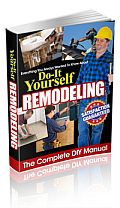Welcome to Walls Guide
A Guide To Plastic Molding For Your Home Article

A guide to plastic molding for your home
from:Plastic is not very environment-friendly. But it is an integral part of many things in life. Even home bases need plastic moldings to keep things in place, and to not leave the basement very loose. Lots of caution is required or installing the plastic mold. Your home will also need ace plastic molds at some stage or the other. Just keep few items handy. Tools, primer and putties are essential.
Instruments
Finely stilted and sharpened instruments are very helpful in cutting out the plastic moldings. You will need predrilled molds, and any misfit may be very awkward. Sharp items ensure that the fitting is good. The blade used should be really effective.
Plastic molds work well on wooden putties. Try creating a wooden base at the ceiling and then put the plastic mold. Square molds are the general choice, but you may also go for the spherical ones.
Butt joints
Just like a body decays, and joints appear to take the most of the old person’s weight and problems, homes, too get old. The trick is to keep the joints hidden, and molds do that effectively. Mitered joints are preferred to butt joints owing to high notice, but these are what you will have to choose for non-usable areas like kitchen and bathroom corners. MDF joint is also an option. You have to be discreet in making good use of the joints.
Nailing
You will need nails and screws to keep the molds intact. Make them invisible by using same colored nails. Better use adhesives sold at hardware stores. Before nailing, check whether the predrilled mold is bigger or smaller. Chop it to size. Take the measures fine and then adjust the nails. You can also use paint to prevent the apparent nails from being an eyesore.
Angles
Use the miters for the best angled approach. 45 and 90 degrees suit the purpose best but 60 degree is not a far cry. Ever remember that just like crown molds, plastic molds too are the biggest in the bottom.
PVC and latex caulks are great options to set the proposition for plastic molds for your home.
Primers
Previously employed or intelligent primer use will make the molds look consistent. Check out the edges, as they may be rough. Paint the edges well with primers before putting the final touch. Texture painting should only be done, once primers have been used.
The external use will need more space to maneuver for plastic molds than interior use. You need to check the measurement index with a professional or on the Internet.
Fragile look is good for the home, but it should be hard in the crust. A straight analogy may be drawn with a coconut.



